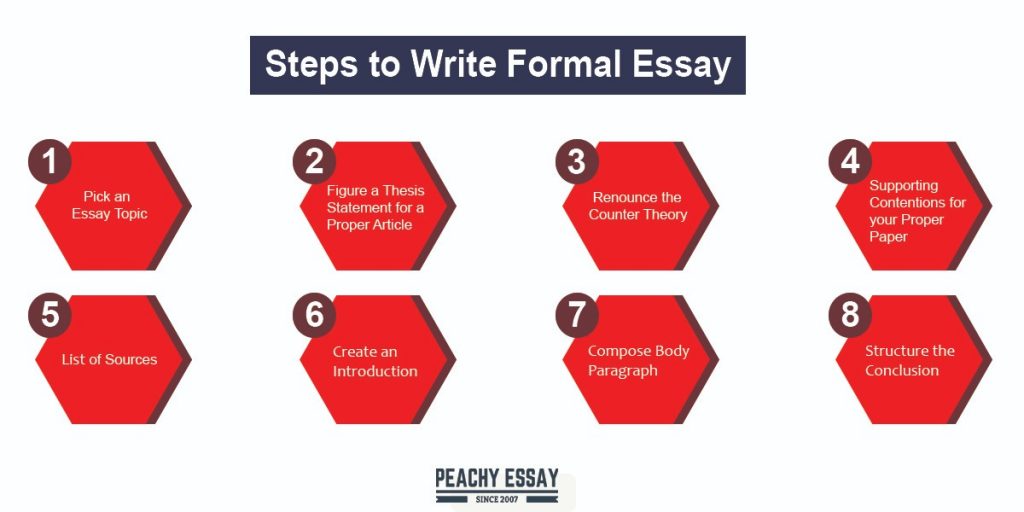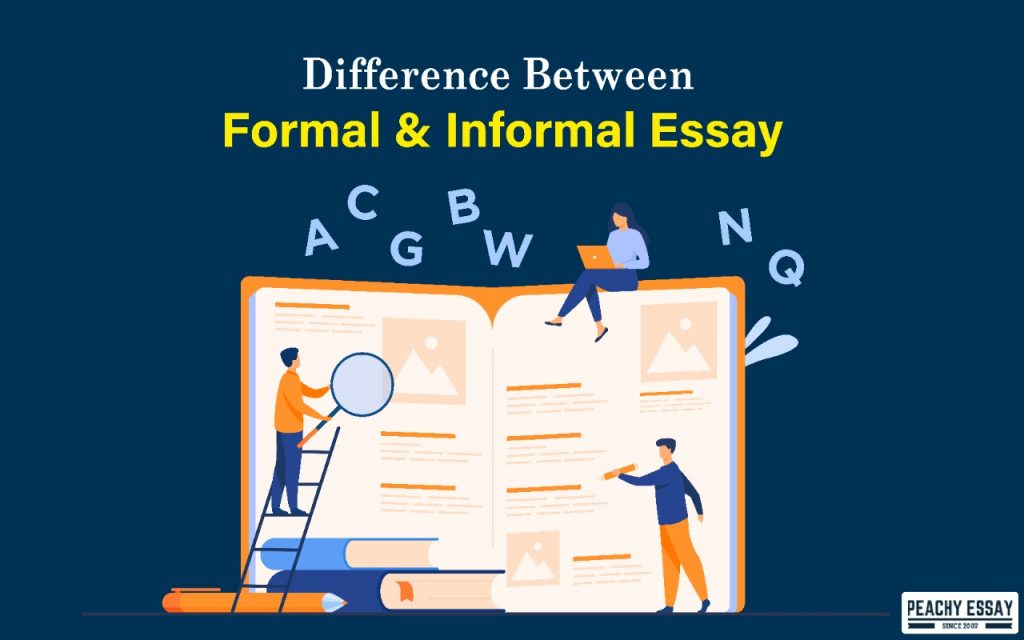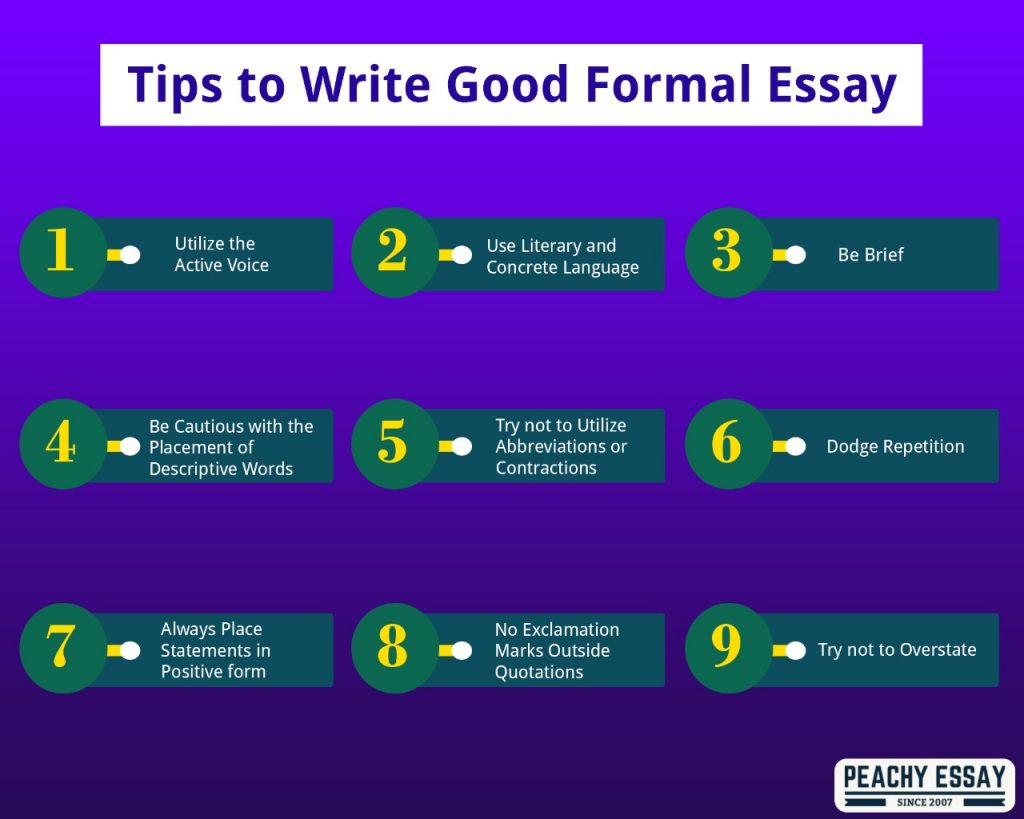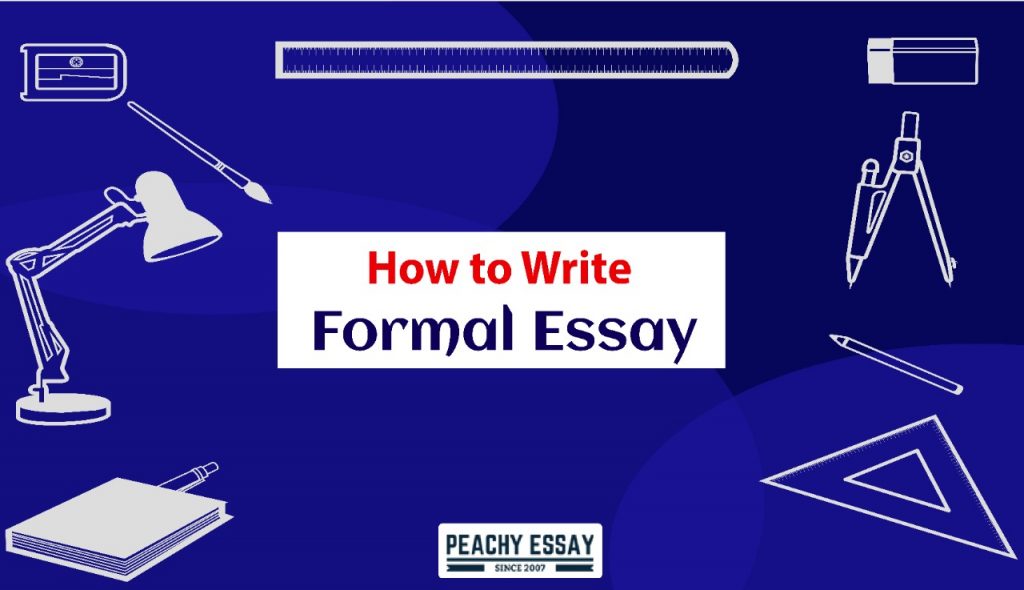Formal essays have numerous reasonable uses outside the study hall. For example, a formal essay might be necessary for certain employment forms, expert reports, and correspondences. Composing formal essays requires a comprehension of how to structure the article, introduce it, and write in a conventional composing style. Figuring out how to compose a solid formal essay can make you excel in your academic studies and your expert profession.
Formal Essay Definition
A formal essay is an academic level paper that informs the audience regarding some data. Contrary to argumentative exposition where you need to pick a topic, take your situation on this point and demonstrate it is utilizing sensible and dependable contentions.
Formal papers manage an issue or trouble (neediness, confidence, abortion, war, or environment) with the end goal of finding an answer for it. This doesn’t imply that there can be just a single plan. For instance, abortion without anyone else isn’t an issue; it turns difficult when it appeared differently in relation to a strict conviction or a given arrangement of good guidelines.
The main thing is to realize that composing a formal essay needs you to carefully ponder the point and to plan a strong thesis statement. Here it isn’t permitted to compose unreservedly and without an all-around characterized theme.
Formal Essay Structure
Each formal essay is created on a framework. It furnishes the article with an expert look, which is totally important for these pieces. Ordinarily, there’s a standard article structure for every conventional exposition. Here’s a short manual for making progress with its structure.
Title
It’s the name of the exposition that mirrors the subject of your portrayal. Keep it basic, explicit, and inside 5-10 words.
Introduction
The start of an article should assist the reader with understanding what you will talk about. It must be appealing to draw the reader into perusing the entire exposition. One of the approaches to make your acquaintance engaging is to use addresses that you will in the end reply to in your paper. You can likewise utilize insights identified with your point just to give more inside and out data to your reader. Measurements have a method of clarifying something in a more profound and authentic manner. Well, known expressions can likewise be a pleasant method to snare your audience.
Body
The body is the core of your article. It has all the data that the reader requires to know. You need to bundle it in an overall quite clear manner to make it simple. The thought you are talking about should come out plainly in the body. If your objective is to convince your audience, this is the place where you ensure you have persuading articulations upheld by real proof.
Conclusion
Subsequent to contending your case, the conclusion is the place where you wrap up the point. Leaving the exposition at the body may not persuade the audience however much it ought to. You need to end the conversation with a summary of all that is in the article. It is a significant piece of formal exposition composing.
How to Write a Formal Essay: Step by Step Guide

Pick an essay topic
Conceptualize potential subjects. Conceptualizing is quite possibly the most well-known technique for point development. It permits you to investigate numerous potential topics without focusing on any of them until you choose what will turn out best for you.
Your topic ought to be a subject that is fascinating to you since you need to have the option to expound on it finally. If you are composing an article for school, be certain that your theme fits the task you’ve been given.
Whenever you’ve picked an overall subject for your paper, you may have to limit the focal point of your article. You don’t need a topic so wide that it will take a hundred pages to sufficiently cover the topic, however, you additionally don’t need a point so limited that the subject will be depleted in a couple of pages.
Figure a thesis statement for a proper article
A thesis statement shows what the resulting paper will address. It ought to be a case or assessment that you will attempt to shield, and it should fuse or recognize any important focal points through which you will break down your subject.
Consider what your assessment on the issue is. Attempt to break down it from various sides and arrive at a resolution that appears to be sensible to you. Then, put forward the proposition; three long sentences will be fine. The thesis ought to be obviously and exactly detailed as not to sound equivocal.
Renounce the counter-theory
It isn’t important to have a counter-proposal in your paper yet this will establish a connection with the reader. A paper must be pluralistic, implying that all potential perspectives ought to be regarded. There is no total arrangement or truth. Subsequently, your postulation and another person’s assessment could both be halfway obvious. Nonetheless, you should utilize a few facts and information to disavow your adversary’s proposal.
Supporting contentions for your proper paper
Numerous bloggers and web clients out there lean toward composing sincerely as opposed to supporting their conclusions with strong arguments. Try not to duplicate them! Back the thesis statement with contentions that can be confirmed effectively by checking their sources.
List of sources
You need to join a list of titles that you have alluded to all through the proper exposition. Without references and book index your paper will appear to be questionable.
Create an introduction
The starting paragraph ought to give readers adequate data to understand the issue and what you will look to demonstrate or discredit in the resulting text. Start your introduction with a snare, which means something that attracts your reader to need to find out additional. Give the reader any important background/explanatory data. Add your thesis statement close to the end of the last paragraph.
Compose body paragraphs
The body paragraphs contain the majority of an exposition. The body should come after the introduction and before the conclusion. The more research that you have done, or the more you need to say about your subject, the more extended the body paragraph will be in your exposition.
Form a topic sentence for each paragraph, and place that sentence someplace close to the start of the paragraph. The topic sentence is typically the main sentence of a body passage.
A topic sentence ought to present or communicate the “evidence point” of that section, and the resulting sentences ought to clarify or expound on the subject sentence. Each paragraph in the body of your exposition should run after tending to your thesis statement.
Structure the conclusion
The end passage may sum up the evidence that was spread out in the first body sections, or it might offer some more significant ramifications dependent on the supposition that the postulation has been sufficiently demonstrated. A few expositions may require either, while others may require both a summary and an expectation/suggestion. How you make your decision will differ, contingent upon the task or the objective of your article.
Differences between Formal and Informal Essays
Formal and informal essays are diverse depending on the following

Vocabularies
It’s a significant thought when you are contrasting a casual exposition and a conventional one. Take two articles that have indistinguishable content and research. You’ll discover the proper one to be somewhat more than the other. That is on the grounds that proper works frequently include longer words, in contrast to the casual ones. Phrasal action words are excluded maintained from formal content and generally replaced by longer words, with the exception of the ones having no comparable substitutions.
Passive voice
Informal essays adopt the strategy of reflective articles and emphasized on personal occasions, while, formal papers feature facts. Hence, formal works engage a more noteworthy number of passive voices than casual ones. In casual papers, utilization of the primary individual beats the utilization of the subsequent individual, which is totally unique in the event of formal expositions. Subsequently, formal sections are indifferent and don’t address a particular individual or item. Basic developments are supplanted by uninvolved voices in proper papers.
Abbreviations
The style of informal articles is not the same as formal expositions from multiple points of view. The utilization of abbreviations is one significant thought when you are composing a proper paper. In casual arrangements, you are permitted to utilize shortenings as I’m “we’ve,” “you’ll, etc. Nonetheless, you need to compose the full terms like “we have,” “I am,” “you will” while composing the proper expositions. Remember that proper articles are methods for formal correspondence. In this way, never use shortened forms of obscure abbreviations.
Most Frequently Asked Questions about Formal Essay Writing
How would you start a formal essay?
There are seven principle steps associated with composing a proper paper:
- Picking your topic
- Drafting the thesis statement
- Introduction
- body or supporting sections
- Conclusion
- Editing and proofreading.
Following these means permits you to work on a thoroughly examined formal paper that doesn’t have any gaps.
The initial three stages require profound thought, the fourth step requires research and the leftover advances require a sharp eye and tender loving care.
What is the distinction between an introductory statement and a thesis in a formal essay?
A thesis statement clarifies your general point about the conventional article while sketching out your subject and what you intend to demonstrate about your theme. A decent thesis statement is enlightening or powerful and presents your perspective.
An introduction is a paragraph that presents your subject and tells your perspective. It is the author’s early introduction to the audience as it shows your composing style and establishes the pace for the conventional exposition. A decent introduction catches the audience’s eye and makes way for the supporting paragraph to come. The thesis statement is found inside the introduction.
Is it a smart thought to begin a formal essay with a quote?
A formal essay can be begun with a quote as long as it is pertinent to the topic and catches the reader’s eye.
Regardless of whether you start with a serious quote from an authoritative individual or a clever statement, the point is to catch the audience’s eye and enhance your conventional exposition by supporting your central matter. Whenever this is done, you can have confidence it’s a smart thought.
Is it OK to utilize “I” and “our” in a conventional exposition?
The utilization of these words relies upon two components: regardless of whether you are composing a humanities paper or a science paper and your marker’s way of thinking.
For the most part, you are advised to avoid their utilization in a formal essay. Notwithstanding, as circumstances are different, a few instructors acknowledge it while others don’t, so it is ideal to look for exhortation from your educator.
Is it suitable to utilize metaphorical language in a formal essay?
Indeed, non-literal language, when done fittingly, can enhance your conventional article.
Journalists, for example, Shakespeare have utilized allegorical language to improve their composition, as it can assist with painting pictures for your reader that other language could not.
Why are contractions prohibited from formal exposition composing?
Contractions are a piece of casual composition so they can’t and ought not to be utilized in formal essays.
The utilization of compressions in a proper article is satisfactory when the subject of the exposition is about constrictions or you are including an idiom or direct citation for your paper.
What tense should a conventional paper be written in?
A few educators will encourage you to write in the present tense while others support the past tense. Both can be worth relying upon the kind of paper, but the overall principle is to be steady with whichever tense you use all through the exposition.
What is the most ideal approach to wrap up a paragraph in a formal essay?
The most ideal approach to end a paragraph is to repeat the main point and close with an impression sentence that closes that paragraph.
Tips on How to Write a Formal Essay
Here are the tips on how to write a formal essay

Utilize the active voice
The active voice is utilized when the subject of your sentence plays out an activity to an immediate article. The passive voice is utilized when the subject is the thing accepting the activity and the thing doing the activity shows up as an aberrant item close to the furthest limit of the sentence.
The active voice is viewed as more straightforward and clear. Authors who decide to utilize the detached voice remove the office of the thing playing out the action word, causing the sentence to appear to be feeble and tangled.
Think about these two sentences from the presentation of two school confirmations expositions:
I have been in various administrative roles: leader of the understudy board, the financial officer of the Latin club, and chief of the soccer group.
There were various administrative roles taken on by me: leader of the understudy committee, financier of Latin club, and chief of the soccer group.
As should be obvious, the subsequent model is in the inactive voice and appears to be awkward and indirect. Unmistakably, the subsequent sentence is the less clear and brief alternative. The inactive voice is regularly utilized by individuals who attempt to evade duty (for example “the light was broken,” rather than “I broke the light”). You are attempting to feature your accomplishments in your school papers, so try to assume liability for them by utilizing the active voice!
Use literary and concrete language
Save colorful and abstract language for works of fiction. When composing a formal essay, you need to make sure you utilize extremely understood and direct language. This requires barring any analogies and metaphors, similar sounding word usage, exaggerations, litotes, and other artistic methods. You need your composition to be handily perceived in a brisk read-through—abstract language hinders the reader and makes your composing less concise.
Be brief
Longwinded sentences are difficult to follow. We suggest excluding any sentences that are longer than three lines in your papers. As a dependable guideline, never say in 10 words what you can say in 5. This standard is pertinent to passage length too. Obviously, one sentence isn’t really in a way that is better than four; however, ensure that each sentence says something critical. Try not to utilize any filler sentences.
Be cautious with the placement of descriptive words and phrases
Ensure that you place modifiers and expressions as near the thing that they adjust as could be expected. Something else, your composing can get hard to peruse or the importance of the content can be confused. Investigate these models:
I will apply to the University of Pennsylvania in the fall.
In the fall, I will apply to the University of Pennsylvania.
As you can find in the principal model, the illustrative expression “in the fall” seems like it has a place with “the University of Pennsylvania.” The University of Pennsylvania is certainly not an occasional school. “In the fall” depicts when the activity will be performed, not when school is in the meeting. It is vastly improved to put “in the fall” nearer to the action word that it alters, “applying”— as demonstrated in the subsequent model—instead of after the prepositional expression.
Try not to utilize abbreviations or contractions
This standard is significant in any piece of expert composition. Constrictions are just fitting for conversational language and put on a show of being apathetic in conventional composition. Likewise, shortenings are frequently hazy (not every person understands what CCC stands for).
Dodge repetition
You would like to reiterate your points and backing them in an unexpected way. Nonetheless, you would prefer not to rehash a similar point, again and again, utilizing distinctive language. If your sentences are saying something very similar, it will appear like you were not fit for concocting more material to write about.
Always place statements in positive form (don’t place them in a negative structure)
This will cause your language to appear to be more grounded rather than reserved and delaying. If you utilize “not,” it should just be in instances of clear disavowal or the absolute opposite. Investigate these models:
I do not usually arrive late
I’m for the most part on schedule.
The second sentence is better than the first one
No exclamation marks outside quotations
Actually, the motivation behind the exclamation mark is to accentuate shouts (for example “What a magnificent day!”) and orders (“Stop!”). Neither ought to be found in a school application paper, so strike these from your composing completely.
Try not to overstate
If you utilize an undeniable misrepresentation, your reader will be careful and start to question all that you say—including the remainder of your self-announced capabilities. You are attempting to get and make sure about your reader’s trust; don’t exaggerate your points.




